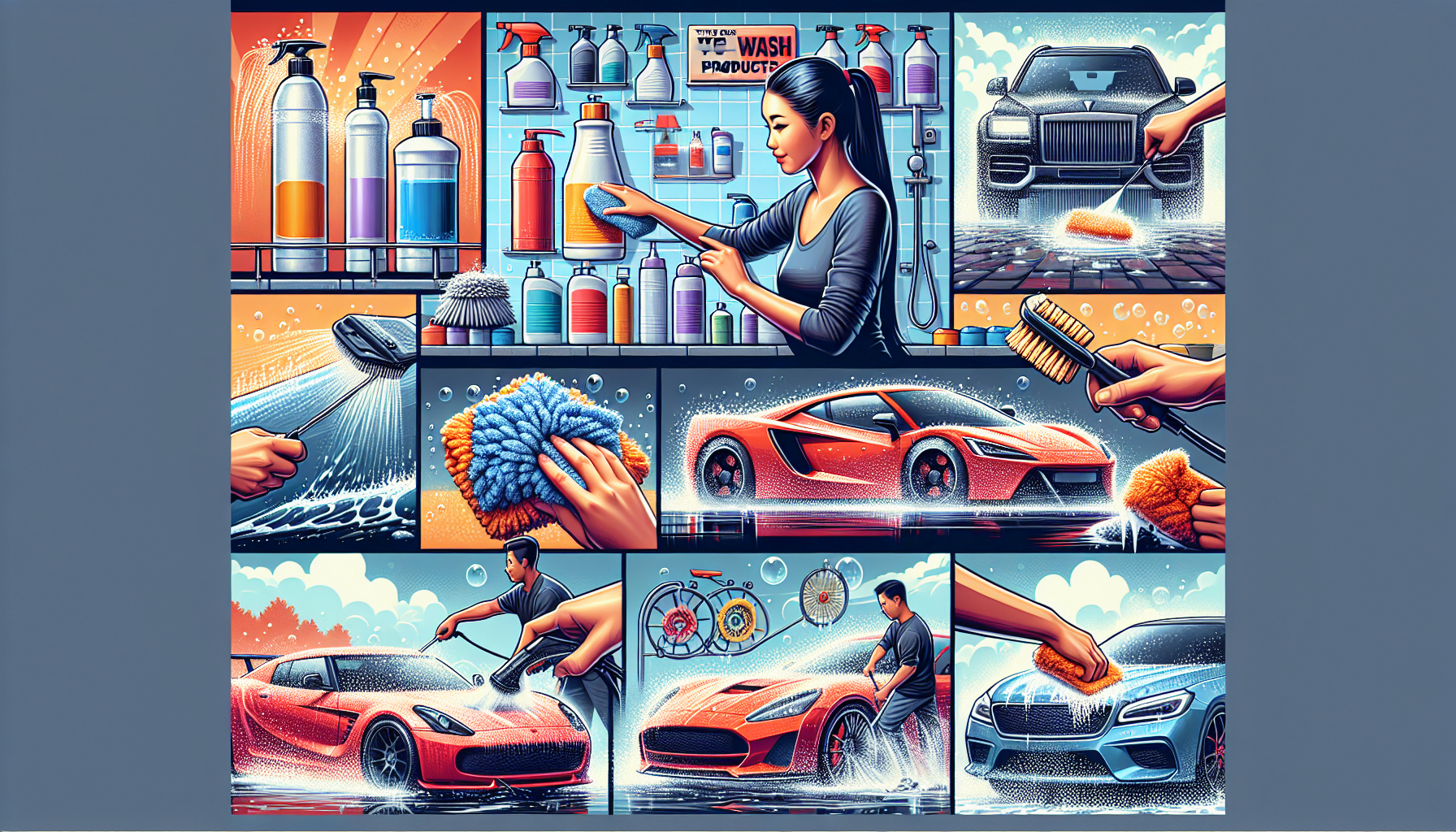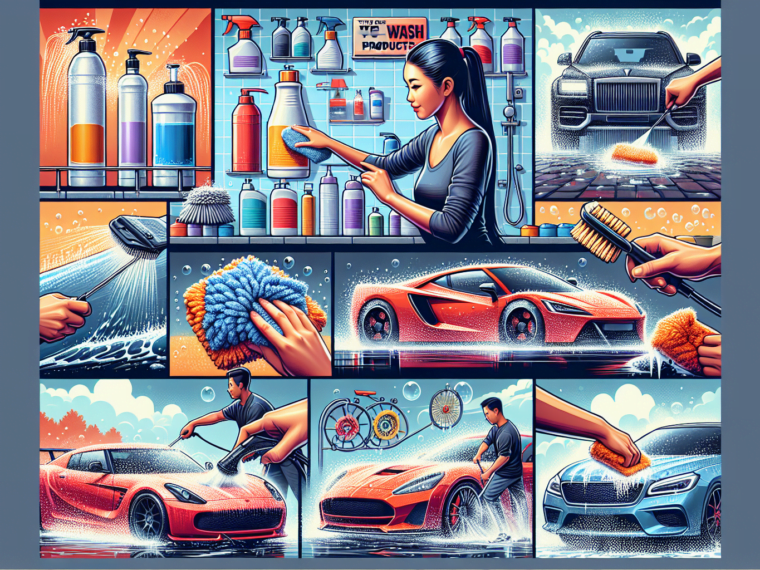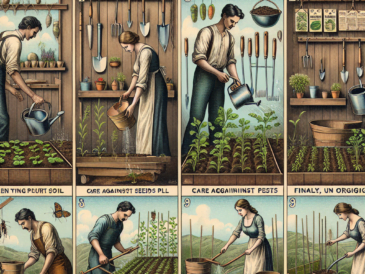A little Introduction
Key points
• Use the right cleaning products: Choose a car-specific soap and avoid using household detergents, as they can strip off the car’s protective wax.
• Start from the top: Begin washing the car from the roof and work your way down to avoid spreading dirt and grime onto areas you’ve already cleaned.
• Use the two-bucket method: Fill one bucket with soapy water and the other with clean water to rinse your wash mitt or sponge, preventing swirl marks and scratches on the car’s surface.

Benefits of a Proper Wash
When you give your car a thorough scrub, you’re not just eradicating dirt – you’re safeguarding its finish from harmful contaminants like bird droppings and bugs. Regular washes also prevent the buildup of grime and other corrosive substances that can lead to costly repairs down the road. Plus, let’s not forget how satisfying it is to step into a gleaming vehicle that shines inside and out.
Different types of car washes
When it comes to cleaning your car, there are a few different options available. Firstly, there’s the traditional hand wash, where you get down and dirty scrubbing every inch of your vehicle yourself. Then, there’s the automatic car wash, which offers a quick and convenient way to clean your car without breaking a sweat. Finally, you have the option of a mobile car wash service, where professionals come to you and take care of everything. Each type has its own pros and cons, so it’s important to choose the one that best suits your needs and preferences.
Choosing the right products for car washing
One of the most essential products for car washing is soap or shampoo specifically formulated for vehicles. Using dish soap or other household cleaners may seem cost-effective, but they can strip off the protective wax coating on your car’s paint. Look for a pH-balanced car wash soap that is safe for all types of finishes.
Wash mitts and sponges
When it comes to physically washing your car, having the right tools is crucial. Invest in high-quality wash mitts or sponges that will not cause scratches on your car’s surface. Additionally, using separate mitts or sponges for different areas of your car, such as wheels and paintwork, can help prevent cross-contamination.
Towels and drying aids
After giving your car a thorough wash, proper drying is essential to avoid water spots and streaks. Microfiber towels are gentle on the paint and highly absorbent, making them an excellent choice for drying your vehicle. Additionally, there are various drying aids available, such as quick detail sprays or drying agents, which can further enhance the drying process.
Importance of using the correct techniques
Maintaining the exterior of your vehicle not only keeps it looking good but also helps protect it from environmental elements. Using improper washing techniques can lead to swirl marks, scratches, and other damage to your car’s paintwork. By employing correct methods such as pre-rinsing before washing, using two-bucket method to minimize dirt transfer during washing, and drying with soft towels in straight lines instead of circular motions, you can ensure that your car stays in top condition.
Gathering the necessary supplies is an essential first step in preparing for a successful car wash. You’ll need items such as a bucket, car wash soap, a hose, sponges or wash mitts, and drying towels. It’s important to have all these supplies handy before you begin to ensure a smooth and efficient washing process.
After gathering the supplies, it’s time for a pre-wash inspection and assessment. Take a little time to inspect the car’s exterior for any existing damage, such as dents, scratches, or chipped paint. This assessment will help you pay attention to these areas during the wash and take necessary precautions to avoid causing further damage.
When conducting the pre-wash inspection, be sure to take extra care in sensitive areas of the car. Parts like the headlights, taillights, and any plastic or chrome trim on the vehicle require gentle handling to avoid accidental damage during the washing process. Additionally, pay attention to areas with existing wear and tear, as they may need special treatment. Taking these precautions will help ensure that your car comes out of the wash looking great without any additional harm being done.
One of the essential steps in car maintenance is keeping your vehicle clean. An effective car washing process involves several important steps:
Rinsing the car to remove loose dirt and debris
The first step in the car washing process is to give your vehicle a good rinse. This will help to remove any loose dirt, dust, or debris that has accumulated on the surface. Using a high-pressure hose or nozzle can be especially helpful for this task.
Pre-soaking and applying car wash soap
Next, it’s a good idea to pre-soak your vehicle with water and then apply a generous amount of car wash soap. This helps to loosen and break down any stubborn grime or dirt that has adhered to the paintwork.
Using the two-bucket method for washing
Consider using a two-bucket method when washing your car. Fill one bucket with soapy water and another with clean water for rinsing your wash mitt or sponge. This helps to prevent transferring contaminants back onto the surface of your vehicle and reduces the risk of causing scratches.
Proper techniques for washing different areas of the car
When it comes time to start washing your vehicle, it’s important to use proper techniques for cleaning different areas. For example, using a soft microfiber wash mitt and starting from the top of the vehicle and working downwards helps ensure an even clean. Be sure to pay attention to areas such as wheels, tires, and the undercarriage which often collect a significant amount of dirt.
Thoroughly drying your car after washing it is a crucial step in the process. Not only does it help prevent water spots and streaks, but it also gives your vehicle a polished finish. Using the right tools for drying can make the process easier and more effective.
Microfiber cloths or towels are highly recommended because they are gentle on the paint and absorbent. Avoid using old rags or sponges that may cause scratches or leave lint behind.
Using the Right Tools for Drying
Opting for a quality microfiber towel or chamois will ensure that water is absorbed efficiently without leaving behind any residue on the surface of the car.
Final Inspection and Touch-Ups
After drying, perform a final inspection to check for any missed spots or remaining water. Touch-ups can be done by using detail spray and a clean microfiber cloth to eliminate any remaining smudges or spots. Pay attention to areas such as door handles, side mirrors, and around emblems where water tends to accumulate.
When dealing with stubborn stains and contaminants on your car, it’s essential to approach them with care. Start by using a gentle cleanser and a soft cloth to gently scrub away the blemishes. If that doesn’t work, consider using a specialized cleaner that is designed to target specific types of stains or contaminants. Always remember to test any new product on a small, inconspicuous area of your car before proceeding with the full application; this can help prevent potential damage.
Clay Bar Treatment for a Smooth Finish
To achieve a smooth finish on your car’s exterior, you can employ the clay bar treatment. This technique involves using a special clay bar, along with a lubricant, to eliminate embedded contaminants from the surface of the paint. By gently gliding the clay bar over the paint, you can effectively remove stubborn grime and restore a silky-smooth texture to your vehicle’s finish.
Applying Protective Coatings After Washing
Once you’ve completed the washing process, it’s crucial to safeguard your car’s exterior against future damage. Applying protective coatings, such as wax or sealant, can help shield the paint from environmental hazards like UV rays and acid rain. These coatings also provide a layer of defense against minor scratches and abrasions, helping maintain the shine and luster of your vehicle for an extended period of time.
Maintaining a Clean Car
A little Maintenance Between Washes
To keep your car looking clean between washes, there are a few things you can do. First off, regularly remove any debris or dirt from the exterior by using a gentle brush or microfiber cloth. Additionally, consider treating any stains or spills promptly to prevent them from setting in. Lastly, take care of your car’s interior by regularly vacuuming and wiping down surfaces to prevent dust and grime buildup.
Recommended Frequency for Car Washing
When it comes to washing your car, it’s crucial to find the right balance. Overwashing can strip away the car’s protective wax layer, leading to potential damage over time. On the other hand, leaving dirt and grime on for too long can cause permanent staining and deterioration of the paintwork. As a general rule of thumb, aim to wash your car every two weeks, but adjust this frequency based on your local climate and driving conditions.
Best Practices for Preserving Car Cleanliness
In addition to regular washing, there are some best practices to help maintain your car’s cleanliness over time. Firstly, consider applying a coat of wax after each wash to protect the paint from environmental elements and maintain its shine. Secondly, invest in high-quality floor mats and seat covers to prevent dirt and spills from penetrating the interior surfaces. Lastly, avoid eating or drinking inside the car to minimize the risk of messes and odors lingering. By following these tips, you can keep your car looking its best for longer periods of time.
Frequently Asked Questions (FAQ)
[lightweight-accordion title=”How often to clean a car?”]A vehicle requires regular maintenance, and car washing is an essential chore for every automobile owner. The frequency of washing your car depends on various factors such as the weather, usage, and environmental conditions. However, in general, it is best to wash your car at least once a week to keep it clean and well-maintained.[/lightweight-accordion][lightweight-accordion title=”What are effective ways to wash the interior of a car?”]Washing the interior of a vehicle involves cleaning the seats, mats, dashboard, center console, and other interior elements. The first step is to vacuum the interior using a vacuum hose to remove debris and dirt from hard-to-reach spots. Then, use appropriate cleaning solutions for different materials in your vehicle such as cloth or leather seats. Finally, wipe down all surfaces using a clean microfiber cloth for a spotless finish.[/lightweight-accordion][lightweight-accordion title=”How to care for headlights during car washing?”]Headlights are an important part of your car’s exterior. During washing, it’s vital to pay attention to them. When washing the vehicle exterior, be sure to clean the headlights with a surface-appropriate cleaner and a microfiber cloth. This will help maintain their clarity and effectiveness in low-light conditions.[/lightweight-accordion][lightweight-accordion title=”What are essential steps for maintaining hubcaps during car washing?”]Hubcaps can accumulate dirt and grime over time. To maintain their appearance during car washing, start by rinsing off loose debris with water before applying foam or detergent specifically designed for cleaning wheels. Using a wheel brush, gently scrub the hubcaps before rinsing thoroughly for sparkling results.[/lightweight-accordion][lightweight-accordion title=”Where can someone purchase car wash supplies?”]Finding quality car wash supplies can be a little overwhelming with the variety available in the market today. One reliable source for purchasing these items is through online retailers like Amazon or specialty auto care stores that provide an array of products from shampoos and towels to protective coatings for your vehicle.[/lightweight-accordion][lightweight-accordion title=”How do you effectively dry your vehicle after washing?”]After completing the wash process, drying the car is essential to prevent water spots and streaks on the surface. Use a chamois or soft cotton towels to gently dry off excess water from panels and windows. Pay special attention to areas such as door jams and exhaust ports where water might drip after being washed.[/lightweight-accordion][lightweight-accordion title=”Are there specific tools needed for cleaning tires after washing your car?”]Tires can gather debris from roads including tar and bugs that can be stubborn to remove during typical car washes. It’s important to invest in proper cleaning materials such as a tire brush, appropriate detergent especially made for tires, and a hose or pressure washer for thorough cleaning post-wash.[/lightweight-accordion][lightweight-accordion title=”What are effective ways of car-washing?”]Car owners often wonder about finding an effective way to clean their vehicles without damaging the paint or finish. The best practice is using high-quality car-wash soap with suitable pH levels that don’t harm the paint while providing adequate lubrication for dirt removal. Employing a two-bucket method – one with soapy water and the other with clean rinse water – is also recommended for ensuring swirl-free surfaces after washing.[/lightweight-accordion][lightweight-accordion title=”Is automatic individual good at going through drive-through automatic car washes?”]Drive-through automatic car washes offer convenience but may not always be gentle on your vehicle’s exterior due to brushes and unsuitable cleaning solutions utilized there. As most drive-through systems use recycled water which may contain abrasive particles, hand-washing may still be preferable if you want to keep Long lasting finish on your vehicle.[/lightweight-accordion]



